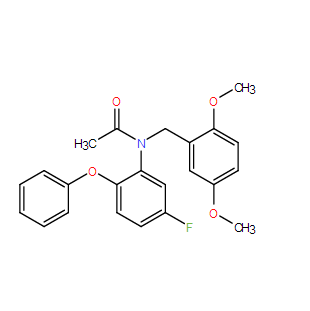| References: |
DAA1106 bound to the mitochondrial fraction of the rat brain in a saturable manner. The dissociation constant (Kd) and maximal number of binding sites (Bmax) obtained from Scatchard plot analysis of the saturation curve of DAA1106 binding were 0.12 +/- 0.03 nM and 161.03 +/- 5.80 fmol/mg protein, respectively. DAA1106 binding to mitochondrial preparations of the rat cerebral cortex was inhibited by several peripheral benzodiapine receptor ligands, and DAA1106 was the most potent inhibitor in inhibiting DAA1106 binding among the peripheral benzodiazepine receptor ligands we tested. The binding of DAA1106 was not affected by several neurotransmitter-related compounds, including adrenoceptor, gamma-aminobutyric acid (GABA), dopamine, 5-hydroxytryptamine (5-HT), acetylcholine, histamine, glutamate and central benzodiazepine receptor ligands even at a concentration of 10 microM. In the cerebral cortex of rhesus monkeys, DAA1106 and 1-(2-chlorophenyl)-N-methyl-(1-methylpropyl)-3-isoquinoline carboxamide (PK11195) potently inhibited DAA1106 binding, while 7-chloro-5-(4-chlorophenyl)-1-methyl-1,3-dihydrobenzo[e][1,4]diazepin -2-one (Ro5-4864) did not. The highest DAA1106 binding was observed in the olfactory bulb, followed by the cerebellum. In autoradiographic studies, practically the same results were obtained, in that the highest binding of DAA1106 was in the olfactory bulb. Potent labeling was also noted in ventricular structures such as the choroid plexus. Thus, DAA1106 is a potent and selective ligand for peripheral benzodiazepine receptors and should prove useful for elucidating the physiological relevance of events mediated through peripheral benzodiazepine receptors. |























